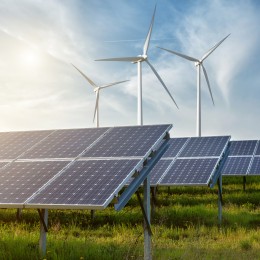Stating that the Trump administration “will always defend American workers, farmers, ranchers, and businesses,” U.S. Trade Representative Robert Lighthizer announced that the president will impose safeguard tariffs on imports of solar cells and modules. The tariffs will apply over 4 years—30 percent in year 1; 25 percent in year 2; 20 percent in year 3; and 15 percent in year 4. The decision was welcomed by two of the foreign-owned, U.S.-located solar cell and module manufacturers that had petitioned the administration to provide remedies to their loss of business because they could not compete with low-cost imports.
“We are still reviewing these remedies, and are hopeful they will be enough to address the import surge and to rebuild solar manufacturing in the United States,” said Juergen Stein, CEO and president of SolarWorld Americas, one of the petitioning companies. “We will work with the U.S. Government to implement these remedies, including future negotiations, in the strongest way possible to benefit solar manufacturing and its thousands of American workers to ensure that U.S. solar manufacturing is world-class competitive for the long term.”
China the Cause
The administration issued a fact sheet explaining that the tariffs are entirely motivated by actions by China. According to the fact sheet, the solar energy sector more than tripled between 2012 and 2016 because of “artificially low-priced” solar cells and modules from China. The government of China has provided subsidies and financing to its solar manufacturing companies, the fact sheet continued. As a result, China’s share of global solar cell production skyrocketed from 7 percent in 2005 to 61 percent in 2012. China now dominates global supply chain capacity, accounting for nearly 70 percent of total planned global capacity expansions announced in the first half of 2017. China produces 60 percent of the world’s solar cells and 71 percent of solar modules.
The direct result of China’s dominance is that the U.S. solar industry had “almost disappeared,” with 25 companies closing since 2012. Only two producers of both solar cells and modules and eight firms that produced modules using imported cells remained viable. In 2017, one of the two remaining U.S. producers of solar cells and modules declared bankruptcy and ceased production.
Serious Injury
The U.S. International Trade Commission (ITC) investigated the petitions from the U.S. manufacturers, made an affirmative determination that imports had imposed a serious injury on domestic producers, and recommended the tariff remedy to President Donald Trump.
The tariffs are expected to substantially increase the domestic prices of solar cells and modules and will lead to a downturn in those sectors of the solar economy that must purchase these components for both commercial and residential installation.
Other Jobs Will Be Lost
“Imposing these tariffs isn’t going to create a single manufacturing job and instead harms hundreds of locally-owned companies, jeopardizes tens of thousands of workers, and stifles billions of dollars in investment in communities in New Mexico and across the country,” said Senator Martin Heinrich (D-NM). “Solar jobs are exactly the types of jobs that we should be encouraging if we are promoting a trade policy that puts American workers first. President Trump proved once again that he has no interest in creating opportunities to grow our economy.”
The American Council on Renewable Energy (ACORE) went one step further in its criticism, viewing the tariffs as an expression of the administration’s views on renewable energy.
“Make no mistake, this is the government intervening in the marketplace to reduce the expansion of solar energy,” stated the ACORE. “Typically, tariffs bring benefits to the American workforce that must be weighed against the higher costs they impose on consumers. In this case, however, thousands of jobs will be lost across the solar development and installation sectors, and among companies that manufacture solar components such as inverters and racking systems. Meanwhile, American consumers and companies will have to pay more for solar technology that continues to drive growth across the globe.”
The administration’s fact sheet is here.

